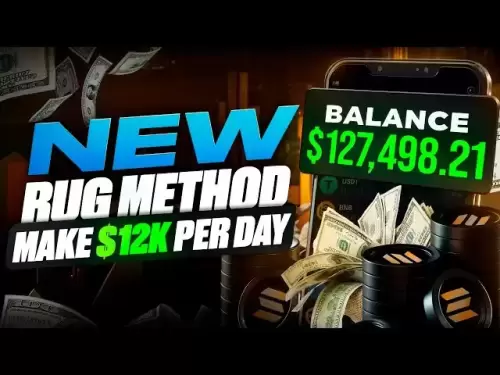-
 Bitcoin
Bitcoin $112400
-1.07% -
 Ethereum
Ethereum $3409
-3.27% -
 XRP
XRP $2.784
-6.60% -
 Tether USDt
Tether USDt $0.9997
-0.03% -
 BNB
BNB $739.3
-2.09% -
 Solana
Solana $158.0
-2.90% -
 USDC
USDC $0.9998
-0.02% -
 TRON
TRON $0.3213
-0.94% -
 Dogecoin
Dogecoin $0.1929
-5.01% -
 Cardano
Cardano $0.6974
-2.82% -
 Hyperliquid
Hyperliquid $36.69
-2.31% -
 Sui
Sui $3.327
-4.80% -
 Stellar
Stellar $0.3672
-5.18% -
 Chainlink
Chainlink $15.65
-3.07% -
 Bitcoin Cash
Bitcoin Cash $525.0
-1.68% -
 Hedera
Hedera $0.2291
-6.00% -
 Avalanche
Avalanche $20.91
-2.96% -
 Ethena USDe
Ethena USDe $1.000
0.00% -
 Toncoin
Toncoin $3.520
-1.12% -
 UNUS SED LEO
UNUS SED LEO $8.968
0.14% -
 Litecoin
Litecoin $105.7
0.26% -
 Shiba Inu
Shiba Inu $0.00001181
-1.79% -
 Polkadot
Polkadot $3.492
-2.08% -
 Uniswap
Uniswap $8.800
-3.10% -
 Dai
Dai $0.9999
-0.01% -
 Monero
Monero $289.9
-3.17% -
 Bitget Token
Bitget Token $4.243
-1.27% -
 Pepe
Pepe $0.00001006
-3.67% -
 Cronos
Cronos $0.1248
-5.68% -
 Aave
Aave $249.7
-2.50%
How to use leverage for NFT? Will the return be higher?
Leverage can amplify NFT investment returns but increases risk; borrow funds, buy NFTs, and manage positions carefully to potentially profit.
May 19, 2025 at 12:42 am
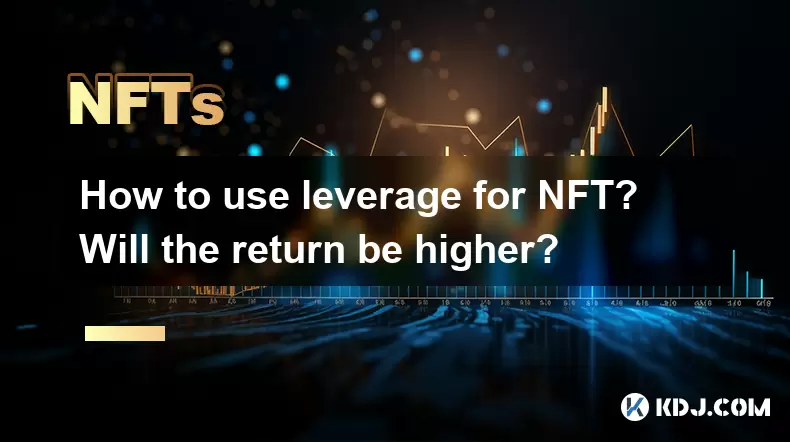
Using leverage for Non-Fungible Tokens (NFTs) is a strategy that can potentially amplify returns, but it also comes with increased risk. In this article, we will explore how leverage can be applied to NFT investments, the potential for higher returns, and the associated risks. We will also provide a detailed guide on how to use leverage for NFTs.
Understanding Leverage in the Context of NFTs
Leverage in the world of finance refers to the use of borrowed capital to increase the potential return on an investment. In the context of NFTs, leverage can be used to purchase more expensive NFTs or to diversify a portfolio without having to commit a large amount of personal capital.
To use leverage for NFTs, investors typically borrow funds from a platform or a third party. This borrowed capital is then used to purchase NFTs, with the hope that their value will increase over time. The investor only needs to put up a fraction of the total cost, known as the margin, while the rest is covered by the borrowed funds.
How to Use Leverage for NFTs
Using leverage for NFTs involves several steps. Here is a detailed guide on how to proceed:
Choose a Platform: First, select a platform that supports leveraged NFT trading. Some popular platforms include NFTfi, Aavegotchi, and OpenSea with integrations like BendDAO.
Set Up an Account: Register and set up an account on the chosen platform. You will need to go through a Know Your Customer (KYC) process and link a cryptocurrency wallet.
Deposit Collateral: To borrow funds, you will need to deposit collateral. This can be in the form of other cryptocurrencies or NFTs. The amount of collateral required will depend on the platform and the amount you wish to borrow.
Borrow Funds: Once your collateral is deposited, you can borrow the funds needed to purchase the NFTs. The interest rate on the borrowed funds will vary depending on the platform and market conditions.
Purchase NFTs: Use the borrowed funds to purchase the NFTs you are interested in. Be sure to do thorough research to ensure you are investing in NFTs with strong potential for appreciation.
Monitor and Manage: Keep a close eye on the value of your NFTs and the borrowed funds. You may need to add more collateral if the value of your NFTs drops significantly.
Repay the Loan: When you are ready to sell your NFTs or if you want to close your position, you will need to repay the borrowed funds plus any accrued interest. Any profits made from the sale of the NFTs can be used to repay the loan.
Will the Return Be Higher with Leverage?
Using leverage can indeed lead to higher returns. If the value of the NFTs you purchase with borrowed funds increases significantly, your returns can be amplified. For example, if you use $1,000 of your own money and borrow an additional $4,000 to buy an NFT worth $5,000, and the value of that NFT doubles to $10,000, your return on investment (ROI) would be much higher than if you had only used your own $1,000.
However, the potential for higher returns comes with increased risk. If the value of the NFT decreases, you could face a margin call, where you are required to deposit additional collateral or sell your assets at a loss to cover the borrowed funds.
Risks of Using Leverage for NFTs
Leverage amplifies both gains and losses. The primary risk is that if the value of the NFTs you purchase drops, you could lose more than your initial investment. Here are some specific risks to consider:
Market Volatility: The NFT market can be highly volatile, and prices can fluctuate dramatically in a short period.
Liquidation Risk: If the value of your collateral falls below a certain threshold, the platform may liquidate your assets to cover the borrowed funds.
Interest Rates: Borrowing funds comes with interest, which can eat into your profits if the NFTs do not appreciate enough to cover the costs.
Platform Risk: There is always the risk that the platform you are using could face technical issues or even go bankrupt, which could affect your ability to manage your leveraged positions.
Managing Leverage Effectively
To use leverage effectively for NFTs, it is important to manage your positions carefully. Here are some tips:
Diversify: Do not put all your borrowed funds into a single NFT. Diversify your investments to spread the risk.
Set Stop-Losses: Some platforms allow you to set stop-loss orders, which can help limit your losses if the value of your NFTs drops.
Monitor Market Trends: Stay informed about market trends and news that could affect the value of your NFTs.
Understand the Terms: Make sure you fully understand the terms of the loan, including interest rates and repayment conditions.
Practical Example of Using Leverage for NFTs
Let's go through a practical example to illustrate how leverage can be used for NFTs:
Scenario: You have $2,000 in your cryptocurrency wallet and want to purchase an NFT that is currently priced at $10,000.
Step 1: You choose a platform like NFTfi that allows you to borrow funds against your collateral.
Step 2: You deposit your $2,000 as collateral and borrow an additional $8,000 from the platform.
Step 3: With the total of $10,000, you purchase the NFT.
Step 4: Over the next few months, the value of the NFT increases to $15,000.
Step 5: You decide to sell the NFT for $15,000. After repaying the borrowed $8,000 plus interest of $200, you have $6,800 left.
Step 6: Your initial investment of $2,000 has turned into a profit of $4,800, which is a 240% return on your investment.
In this example, using leverage allowed you to purchase an NFT that you could not have afforded otherwise, and the increase in value resulted in a significant return. However, if the value of the NFT had decreased instead, you could have faced a significant loss.
Frequently Asked Questions
Q: Can I use any cryptocurrency as collateral for borrowing funds to purchase NFTs?
A: It depends on the platform. Some platforms accept a wide range of cryptocurrencies as collateral, while others may only accept specific tokens. Always check the platform's terms and conditions to see what types of collateral are accepted.
Q: Is there a limit to how much leverage I can use for NFTs?
A: Yes, platforms typically have a maximum leverage ratio that they allow. This ratio can vary, but it is often around 2:1 to 5:1, meaning you can borrow up to two to five times the amount of your collateral.
Q: How long can I keep a leveraged position open for NFTs?
A: The duration of a leveraged position depends on the terms set by the lending platform. Some platforms offer short-term loans, while others may allow you to keep the position open for longer periods. Always check the terms before borrowing.
Q: Can I use leverage to buy fractional NFTs?
A: Yes, some platforms allow you to use leverage to purchase fractional NFTs. This can be a way to diversify your investment and reduce risk, as you are not putting all your borrowed funds into a single NFT.
Disclaimer:info@kdj.com
The information provided is not trading advice. kdj.com does not assume any responsibility for any investments made based on the information provided in this article. Cryptocurrencies are highly volatile and it is highly recommended that you invest with caution after thorough research!
If you believe that the content used on this website infringes your copyright, please contact us immediately (info@kdj.com) and we will delete it promptly.
- BlockDAG, SEI, Ethena: Top Crypto Performers Under the Microscope
- 2025-08-03 10:50:16
- Bitcoin Blasts Past $119K: How Institutional Adoption and Macro Shifts Fuel the Fire
- 2025-08-03 10:55:16
- Crypto, Grok, and August: Decoding the Latest Trends and Insights
- 2025-08-03 11:10:16
- Crypto, Phishing, and Your Wallet: A New Yorker's Guide to Staying Safe
- 2025-08-03 10:30:16
- Troller Cat Meme Coin Presale Soars: A New King in the Crypto Jungle?
- 2025-08-03 10:30:16
- Grayscale, Altcoin Trust, and Mid-Cap Mania: What's the Deal?
- 2025-08-03 08:50:16
Related knowledge
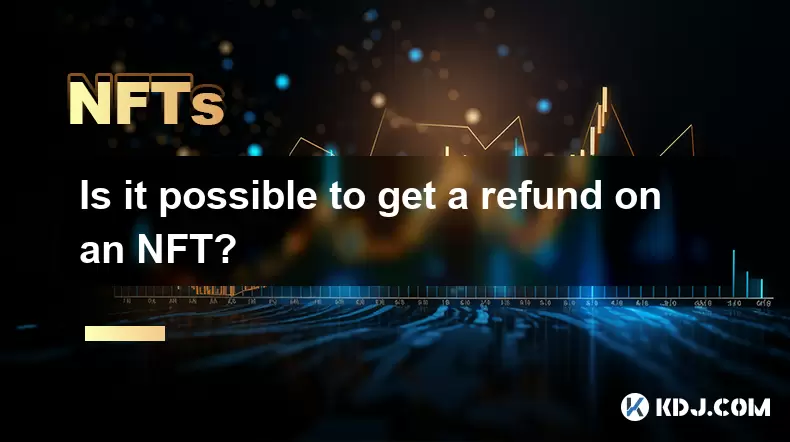
Is it possible to get a refund on an NFT?
Jul 21,2025 at 08:35pm
Understanding NFT Transactions and RefundsWhen you purchase an NFT (Non-Fungible Token), the transaction is typically recorded on a blockchain, making...
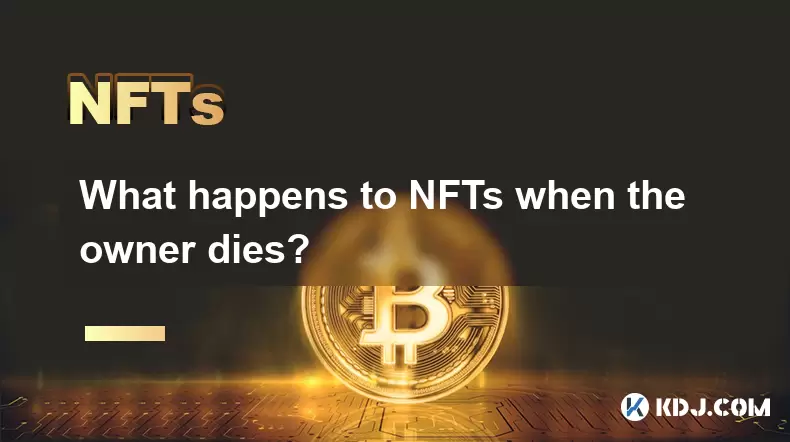
What happens to NFTs when the owner dies?
Jul 22,2025 at 02:43pm
Legal Ownership and Digital AssetsWhen an individual owns NFTs, the question of what happens to these assets upon their death is a pressing one. NFTs ...
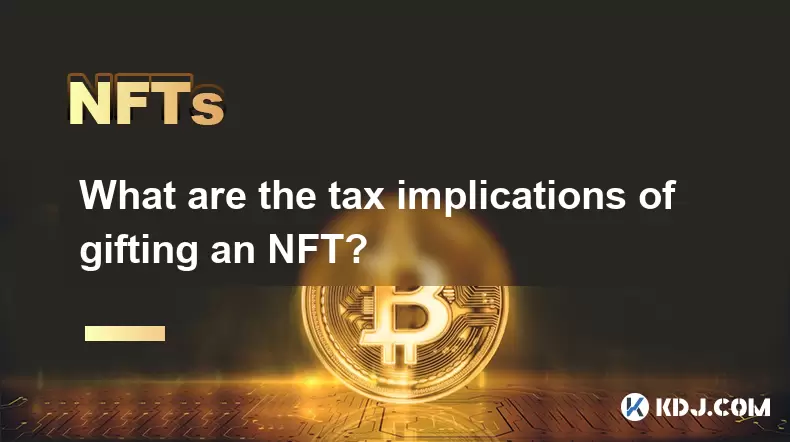
What are the tax implications of gifting an NFT?
Jul 19,2025 at 04:21am
Understanding the Basics of NFT GiftingGifting a Non-Fungible Token (NFT) involves transferring ownership from one individual to another without recei...
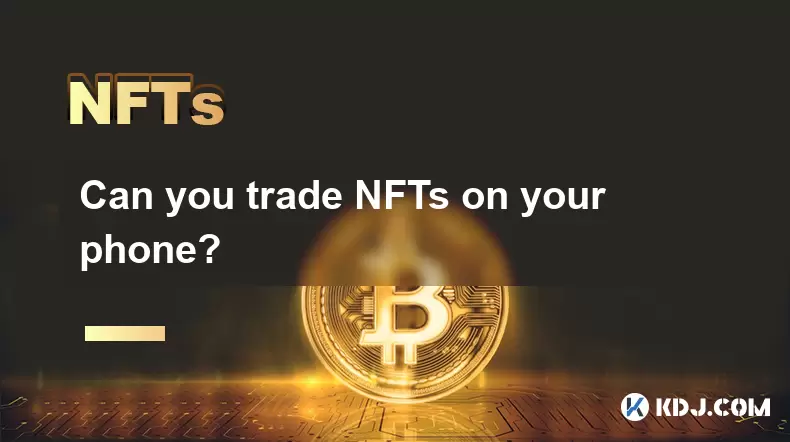
Can you trade NFTs on your phone?
Jul 18,2025 at 04:29am
Trading NFTs on Mobile DevicesYes, you can trade NFTs on your phone, and the process has become increasingly streamlined thanks to a variety of mobile...
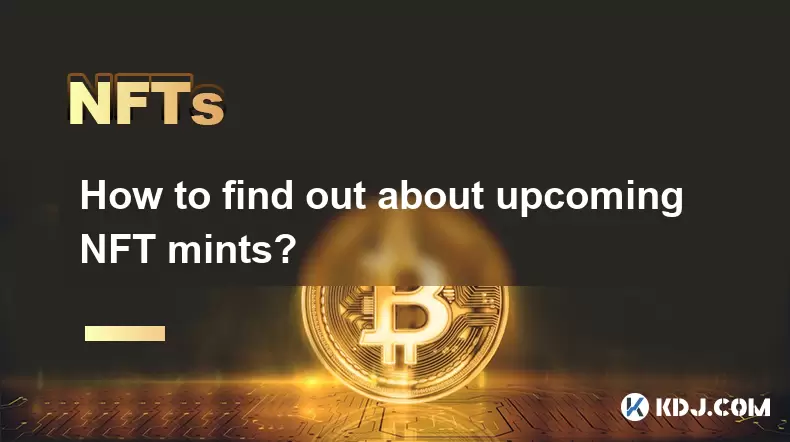
How to find out about upcoming NFT mints?
Jul 18,2025 at 11:50am
Exploring NFT Minting OpportunitiesUnderstanding the landscape of upcoming NFT mints is crucial for collectors, investors, and creators who wish to st...
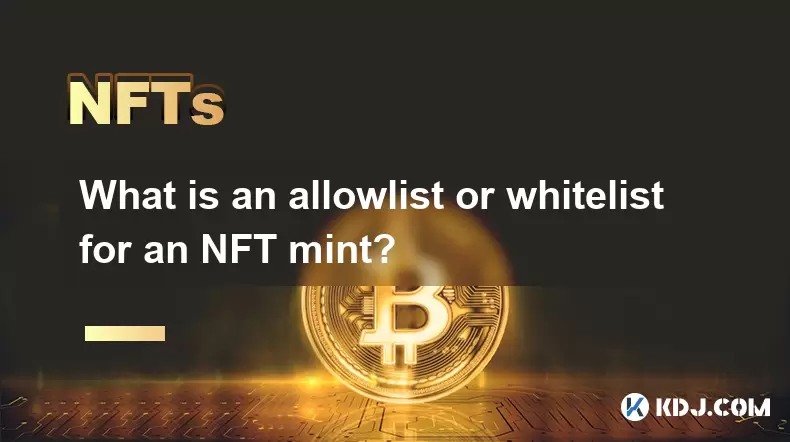
What is an allowlist or whitelist for an NFT mint?
Jul 20,2025 at 07:14pm
Understanding the Concept of an Allowlist for NFT MintingAn allowlist, also commonly referred to as a whitelist, is a mechanism used in the NFT mintin...

Is it possible to get a refund on an NFT?
Jul 21,2025 at 08:35pm
Understanding NFT Transactions and RefundsWhen you purchase an NFT (Non-Fungible Token), the transaction is typically recorded on a blockchain, making...

What happens to NFTs when the owner dies?
Jul 22,2025 at 02:43pm
Legal Ownership and Digital AssetsWhen an individual owns NFTs, the question of what happens to these assets upon their death is a pressing one. NFTs ...

What are the tax implications of gifting an NFT?
Jul 19,2025 at 04:21am
Understanding the Basics of NFT GiftingGifting a Non-Fungible Token (NFT) involves transferring ownership from one individual to another without recei...

Can you trade NFTs on your phone?
Jul 18,2025 at 04:29am
Trading NFTs on Mobile DevicesYes, you can trade NFTs on your phone, and the process has become increasingly streamlined thanks to a variety of mobile...

How to find out about upcoming NFT mints?
Jul 18,2025 at 11:50am
Exploring NFT Minting OpportunitiesUnderstanding the landscape of upcoming NFT mints is crucial for collectors, investors, and creators who wish to st...

What is an allowlist or whitelist for an NFT mint?
Jul 20,2025 at 07:14pm
Understanding the Concept of an Allowlist for NFT MintingAn allowlist, also commonly referred to as a whitelist, is a mechanism used in the NFT mintin...
See all articles
























